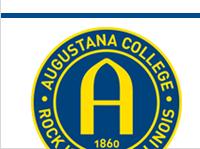Course
GEOG-473 Seminar on Geographic Research
Document Type
Student Paper
Publication Date
2016
Disciplines
Geographic Information Sciences | Geography | Human Geography | Nature and Society Relations | Spatial Science
Description, Abstract, or Artist's Statement
In river towns across the United States, a slow transformation is taking place as aging and abandoned industrial infrastructure is being replaced by new riverfront uses. Consequently, the urban American riverfront has become a battleground, with municipalities, developers, and large corporations fighting over this contested land. Although riverfronts offer a wealth of benefits for the public such as therapeutic river views and abundant recreational opportunities, studies have shown that public interests and access are often overlooked in the waterfront development process. The purpose of this research is to understand the level of access people in the Quad Cities community have to the Mississippi River. Specifically, this study explores how accessibility levels differ in the cities of Davenport, Bettendorf, Rock Island, and Moline. Also, it explores how the level of measured accessibility relates to the perceived image, use, and accessibility of the River. Information about public accessibility comes from a newly created Mississippi River Accessibility Index (MRAI) and residential surveys. The MRAI combines six indicators to measure accessibility to the river. Applying the indicators to the four cities, Moline ranked number one in having the best accessibility to the Mississippi River while Bettendorf ranked last. The cities of Davenport and Rock Island ranked two and three, respectively. Aligning with the index results, surveys showed that Moline residents have a higher level of perceived access to the river than residents in the other cities. Concerning image, respondents used very different language in describing the Mississippi River, calling the River everything from majestic and a national landmark to sick with pollution and smelly. Despite some negative connections with the River, over eighty percent of all respondents (N=138) agree that their city is a “river town.” Regardless of riverfront perceptions, good riverfront accessibility has economic, environmental, and social benefits, so city planners, officials, and visionaries should prioritize the riverfront as a right of public access in future designs and plans. Beyond the Quad Cities, the methodology offered in this case study can serve as a model for measuring public accessibility in other river towns.
Augustana Digital Commons Citation
Stamberger, Lorraine. "Reaching the Water's Edge: Assessing Riverfront Accessibility in the Quad Cities Area" (2016). Geography: Student Scholarship & Creative Works.
https://digitalcommons.augustana.edu/geogstudent/3
Included in
Geographic Information Sciences Commons, Human Geography Commons, Nature and Society Relations Commons, Spatial Science Commons
